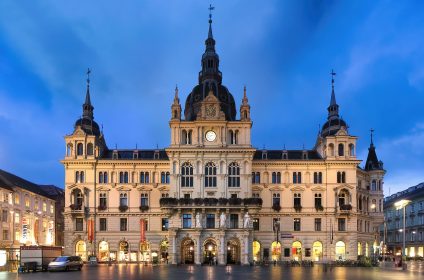Austria
Austria, in the heart of Central Europe, is a remarkable travel destination that enthralls visitors with its vibrant culture, rich history, and amazing landscape. This place’s remarkable legacy is clear in its grand imperial palaces, energetic artistic legacy, and little villages; its trip through time spans millennia.
The great capital of Austria, Vienna captures its interesting past. Once the home of the Habsburg dynasty, the amazing Hofburg Palace is a great emblem of the grandeur of the empire. Visiting the esteemed Vienna State Opera and the Musikverein concert hall will allow music aficionados to really engage with Vienna’s rich musical past. The ageless works of Mozart and Strauss still resound in these famous sites. On the other hand, the Kunsthistorisches Museum, which features a great collection of masterpieces by eminent Renaissance and Baroque artists, will captivate art aficioners.
For those who enjoy exploring outside of the cityscapes, Austria provides a large spectrum of outdoor sports. The amazing adventures the Alps’ magnificent mountains call out to mountaineers, bikers, and hikers. When winter covers the mountains in a pure white, Austria turns into a refuge for skiers and snowboarders. Two of the most well-known resorts worldwide, Kitzbühel and Lech offer thrilling ski runs and a quaint après-ski environment. Get ready for an incredible adventure there on the Hintertux Glacier, where skiing is possible all year long. For the courageous adventurer, it promises to be once-in-a-lifetime event.
Nature enthusiasts will find Austria’s amazing array of national parks to enthralls them. Discover the beauty of Hohe Tauern National Park, where unspoiled valleys and great mountains just wait for you. While the Danube-Auen National Park offers a fascinating window into the life-giving power of the Danube River, the Neusiedler See-Seewinkel National Park features a one-of- a-kind wetland ecosystem. Unique settings in Kalkalpen National Park, Gesäuse National Park, and Thayatal National Park provide amazing experiences with the natural beauties.
Without appreciating Austria’s delicious cuisine, exploration of the country would be incomplete. Austrian food is a wonderful trip across the intriguing past and many cultural inspirations of the nation. Savour the famous Tafelspitz, a succulent boiled beef meal, or the thin, breaded veal cutlet, Wiener Schnitzel. Try the Leberkäse if you’re seeking something more weighty. Your taste will be satiated by this wonderful savory meatloaf. Any Austrian gastronomic adventure must include experiencing the classic Kaffeehaus (coffee house). One can really embrace the Viennese way of life in this comfortable environment full of the rich aroma of freshly brewed coffee and the soft hum of talks.
Still, Austria offers much more than the usual travel destination. Investigate off-the-beaten-path sites and find hidden gems like Hallstatt, a charming town with lovely stores and little wooden homes. Discover the amazing gorges fashioned in Gesäuse National Park by the Enns River. Value the remarkable engineering of the Semmering Railway from the 19th century since it elegantly negotiates the magnificent Semmering Mountains.
The Southern Wine Route invites guests to enjoy local wines at wonderful wineries and treat themselves to the distinctive tastes of the area. For those yearning peace, Lake Millstatt in Carinthia is a refuge. Here you can enjoy swimming, boating, and hiking among other pursuits while surrounded by breathtaking natural beauty. The medieval Millstatt Abbey and the adjacent Granatstein Castle simply accentuate the amazing environment.
The celebration scene in Austria goes beyond only the well-known Salzburg Festival. Before Lent, experience the vivid energy of Fasching (Carnival) celebrations; see the time-honored Almabtrieb (cattle drive) in autumn; or let the enchanted ambiance of the mediaeval town of Eggenburg captivate you during Advent.
Considering a few practicalities will help to ensure a flawless and enjoyable experience. The official currency is the Euro (EUR), thus ATMs are conveniently found in big cities and travel destinations. Though credit cards are usually accepted, it is advisable to have some cash on hand for smaller stores and restaurants. German is the official language, although most tourist destinations have English spoken rather widely. Citizens of most European Union nations, the United States, Canada, Australia, and New Zealand are eligible for up to 90 day Visa-free stays.
Trams, buses, trains, and cars are among the several means of mobility at hand. Vienna boasts a first-rate metro system with easy access to many points of interest. Renting a car also gives more freedom for visiting the rural surroundings of the city. Remember the tolls on roads and the city parking restrictions as well. From opulent hotels in big cities to little guesthouses in villages and historic alpine huts, the lodging choices presented satisfy a broad spectrum of tastes.
Strong advice is given on travel insurance, which offers comfort in case of unanticipated medical problems, trip cancellements, or lost bags. Austria is a fascinating place with plenty of cultural riches, amazing scenery, and great cuisine. Visitors are welcomed all year long and should expect to have special experiences fit for every kind of travel.
Table of Contents
Currency
Capital
Calling code
Population
Area
Official language
Elevation
Time zone
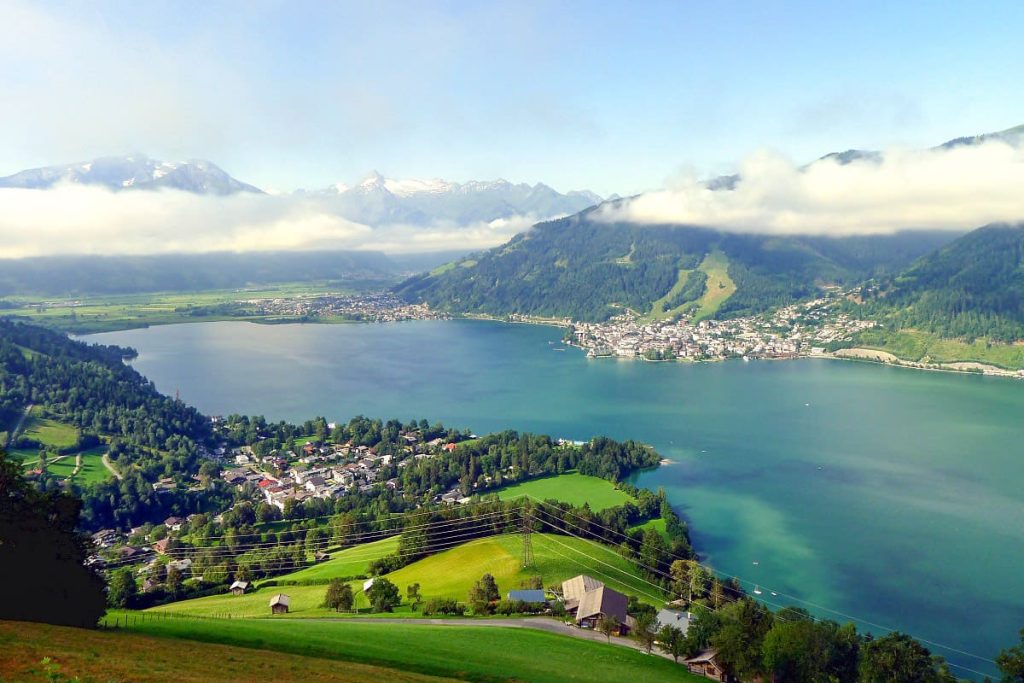
Geography
The stunning story of Austria is created by the convergence of great mountain ranges, vast plains, and glistening lakes in her surroundings. With a somewhat diversified terrain, this landlocked nation in Central Europe offers a unique perspective on the geological past of the continent.
Unquestionably, the magnificent Alps—an enormous mountain range running along Austria’s western and southern frontiers—are the main component in this tapestry. With their craggy ridges ornamented by glaciers that tenaciously cling to the slopes, the steep mountain peaks cut through the azure sky Thousands of years of glacier erosion has produced U-shaped valleys and peaceful alpine lakes with breathtaking beauty in the surroundings. Comprising the highest mountains in Austria, including the challenging Grossglockner, the Hohe Tauern National Park is the most notable feature of this region.
The magnificent Alps progressively become a more muted scene eastward. Less steep terrain of Austria reveals the rolling hills and fertile plains of the Pannonian Basin. Shared with Hungary and other neighboring countries, this large area is a mosaic of agricultural fields and little towns. The second-longest river in Europe, the Danube flows through this region and is rather important as a transit route as well as for supplying food to the rich plains. Thriving on the Danube’s floodplain, the Danube-Auen National Park provides a refuge for many different animal species including wetland environments.
The terrain of Austria goes beyond these two noteworthy features. On the northern border, the rocky mountain range known as the Bohemian Forest offers a different and unusual substitute for the Alps. The undulating forms and deep depressions tell tales of early volcanic explosions. Located in this region, Gesäuse National Park boasts an amazing karst landscape marked by massive limestone cliffs, large cave networks, and subterranean rivers. This unique geological element accentuates the complexity and appeal of Austria’s already fascinating landscape.
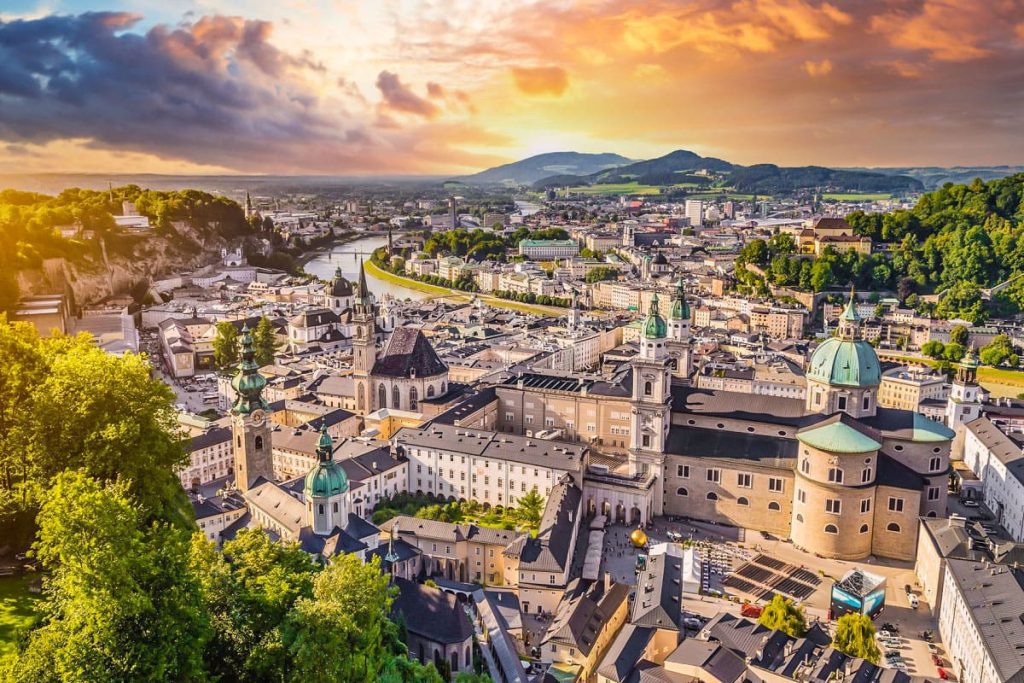
Weather & Climate
Affected by Austria’s geographical features and worldwide position, the weather and temperature of the country show a dynamic and interesting connection. Though usually situated in the temperate zone, the existence of many regional variations offers a variety weather experience for visitors.
One can clearly see the great Alps hovering above the western and southern areas. The great mountains act as a barrier, shielding Austria from the Atlantic Ocean’s moderating influence. Western Austria therefore has a continental temperature marked by clear seasonal fluctuations. While summers are usually marked by pleasant temperatures and relatively little precipitation, winters are defined by low temperatures and plenty of snowfall.
Eastern Austria, in the Pannonian Basin, has a very continental temperature. Though the winters are colder, the summers in this area are sometimes hotter than those in the western section. Generally speaking, the eastern area receives less rainfall and has more chances of hot and dry conditions all through the summer. From cold mornings to balmy afternoons, temperatures show notable fluctuations throughout the day.
Changes in altitude have a major impact on Austria’s temperature and humidity. Usually in the form of snowfall, higher elevations show consistently lower temperatures and more precipitation. Winter sports enthusiasts are drawn to the alpine regions where the slopes are regularly blanketed in fresh powder by the continuous snowfall during the winter months. Valleys between mountains, on the other hand, usually have greater temperatures and less precipitation.
The creation of Austria’s diverse ecosystems is significantly influenced by the temperature and weather. The mountains’ plentiful snowfall maintains rivers, which are vital all year round source of water. On the other hand, the eastern section of Austria’s less harsh temperatures and lower rainfall provide ideal circumstances for producing grapes and other crops, hence enhancing the nation’s variety of landscapes.
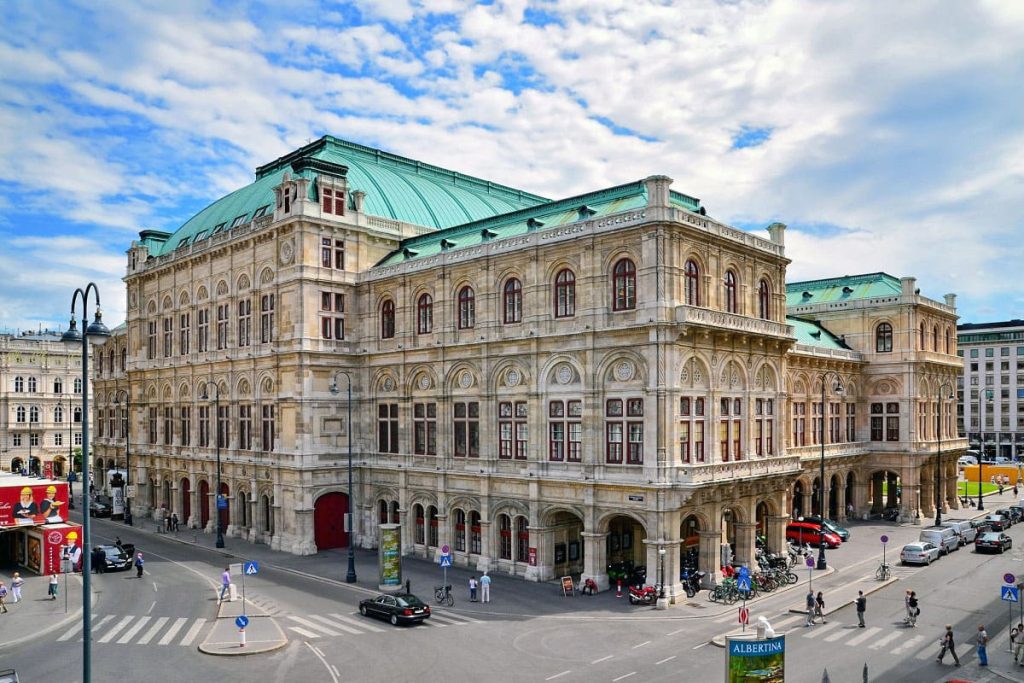
Demographics
Austria’s population shows a fascinating picture of a nation where long-standing customs easily combine with modern ideas. The population of this country in Central Europe is probably about 9 million. Its friendly character and rich cultural legacy are well-known.
About eighty-eight percent of the population comprises ethnic Germans. Still, Austria’s population has been permanently changed by its rich past as a gathering place for strong civilizations. Important ethnic groups like as Turks, Serbs, and Bosniks provide the fabric of the nation lively components. Vienna, the capital, is a shining example of this great variety as a growing international population adds unique quality to the urban surroundings.
More thoroughly analyzing Austria’s demographics exposes a population undergoing aging’s consequences. Often reaching the age at which individuals usually retire, the group born following World War II is known as the baby boom generation. As a result, the birth count has dropped while the population of elderly people has concurrently grown. To ensure the wellbeing of its aging population, the Austrian government has developed a spectrum of social policies meant to aggressively address this demographic transition.
Furthermore heavily influencing understanding of Austria’s population is language. Spoken by most of the people, German is the official language of the whole nation. Still, the variety of regional varieties and minority languages adds to the complexity of the linguistic surroundings. Though minor towns speaking Hungarian, Slovene, and Croatian may be found in the surrounding areas, Austro-Bavarian, a variation of the German language, is widely used all over the country. Many languages spoken in Austria improve the cultural diversity of the nation and produce a harmonic mix of old and modern aspects.
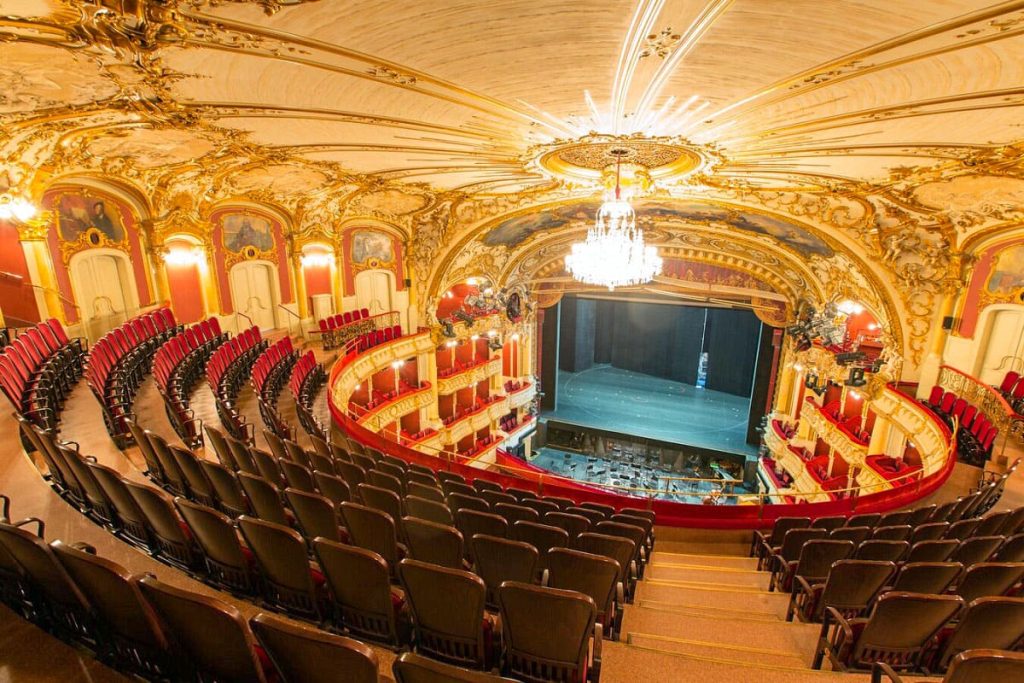
Culture & Music
Austria’s culture resounds with the grandeur of a great past and the creative harmonies of a modern day, like a vibrant symphony. Rich in cultural past, this landlocked nation in Central Europe is closely entwined with its great architecture, active art scene, and surviving customs.
In the system of Austrian culture, music ranks highest. From the emotionally strong symphonies of Mozart and the brilliant waltzes of Strauss to the creative works of Schoenberg, Austria boasts a long legacy of creating outstanding musical talents. Renowned center for classical music Vienna, also regarded as the City of Music, nevertheless is Prominent concert venues like the Musikverein and opera houses like the Vienna State Opera draw globally praised events that enthrall crowds.
Still, Austrian culture goes beyond the music hall. Cityscapes all over the country are ornamented with Baroque architecture, best seen by the magnificent Schönbrunn Palace and the massive St. Stephen’s Cathedral, which act as constant reminders of a former period. Renowned Renaissance and Baroque artists including Titian and Rembrandt have produced magnificent artworks filling the Kunsthistorisches Museum. present galleries inside the museum also show the creative creations of avant-garde Austrian artists, therefore fostering a dynamic interaction between historical and present artistic expressions.
An intrinsic aspect of Austrian culture, coffeehouses are a social refuge with a unique appeal. Over decades, these companies have been gathering places for artists, intellectuals, and common people. A valued custom in Austria, savoring a hot cup of Viennese coffee and a delicious piece of Sachertorte encourages conversation, a laid-back way of life, and a real Austrian experience.
Culture also encompasses the celebrations and rituals marking the Austrian calendar. Often spanning the season, dynamic folk celebrations feature vibrant music, lively dances, and a wide range of traditional clothing. Christmas markets transform metropolitan areas into glittering paradise, adding the joyous atmosphere to let even the most cold winter days melt. Characterized by their unbridled celebration, the exuberant Fasching (Carnival) celebrations mark the start of the season before Lent and remind everyone of the need of savoring reckless abandon and enjoying happy times in life. Austria’s culture is a fascinating mix in which the blending of history and modern generates a quite unique and permanent interaction.
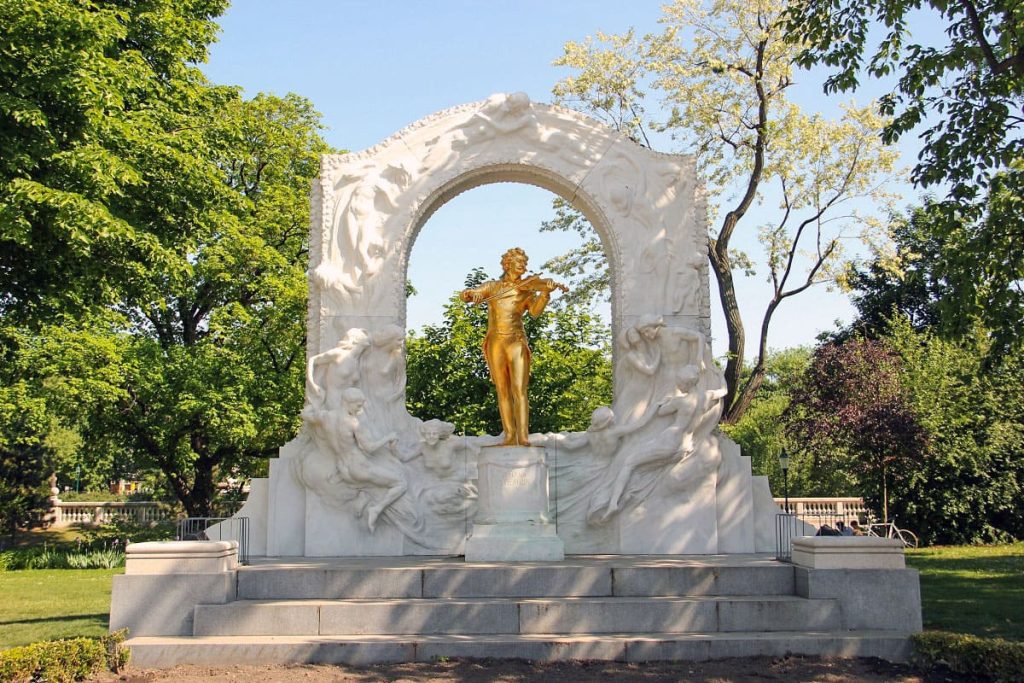
Cultural Etiquette and Customs
With its rich historical history and shaped by its varied topography and surrounding countries, Austria presents a unique cultural fabric. For both visitors and expatriates, understanding basic values and customs guarantees a smooth integration into social and business settings.
Maintaining polite contacts requires greetings. Using salutations “Guten Tag” (Good Day) or “Grüß Gott” (God Bless You) is courteous when greeting someone in public. Saying “Auf Wiedersehen,” or “Goodbye,” formally and politely while departing is customary. When visiting small businesses, kindly say “Grüß Gott” to the owner and say goodbye with “Wiedersehen”. After concluding a conversation, telephone etiquette calls for responding with your name and stating “Auf Wiederhören,” (Goodbye till we hear from each other again).
Public transportation etiquette stresses the need of speaking softly, particularly in cases when German is not your first language. First meetings should begin with a hearty handshake and maintain direct eye contact to show real engagement in salutations. A friendly welcome in social settings usually consists in the two kisses on the cheeks. Still, it is traditional to kiss three times whether visiting Vorarlberg, Switzerland, or Liechtenstein.
Drinking alcohol comes with some fixed guidelines. First a toast, then the words “Prost” (cheers) or “Zum Wohl” (to Your Health). Lighting a cigarette in front of people still eating is seen as rude. A show of respect and thought would be asking permission from other people at the dinner table or postponing eating until all others have finished their meal.
Table manners stress the act of resting an empty hand on the table next to your dish. Austrians also use utensils all during the dinner, holding the fork in the left hand and the knife in the right. Following these social norms will help residents as well as visitors to boldly and elegantly negotiate Austria’s cultural landscape.
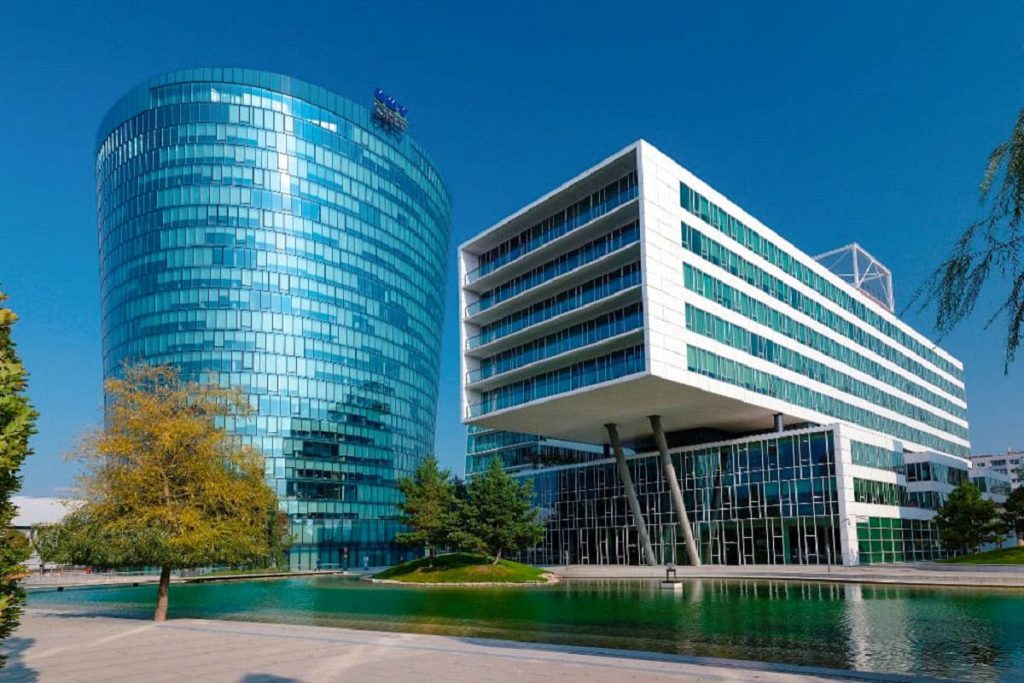
Economy
Exceptional efficiency defines Austria’s economy, which is backed by a special mix of modern ideas and constant stability. Consistent with its robust and varied economic environment, this landlocked nation often performs well in terms of GDP per capita.
The basis of Austrian economy is manufacturing. From sophisticated cars and complex equipment to modern chemicals and life-saving medications, the nation takes great satisfaction in its ongoing legacy of generating excellent products. Because of their highly skilled workforce and relentless commitment to research and development, Austria’s manufacturers keep a commanding presence in their sector.
Unmatched natural beauty of Austria drives tourism, a vital part of the national economy to flourish. Every year, millions of tourists are lured to the breathtaking alpine settings, charming cities like Vienna and Salzburg, and a rich cultural legacy firmly anchored in past. The rise in tourism generates large cash, which supports a robust service sector with many hotels, restaurants, and modes of transportation.
Clearly, Austria is a major player in the European Union’s economic system. Engaging in free trade with its neighbors helps the country tremendously as it gains access to a large and active single market full of possibilities. Vienna serves as a major hub for international organizations, therefore supporting Austria’s economic reputation on a worldwide scene.
Still, the Austrian economy presents natural challenges. While the nation’s reliance on exports makes it susceptible to changes in the global economy, the growing percentage of older people in the population strains social support programs. Notwithstanding difficulties, Austria’s strong focus on encouraging innovation, a robust social safety net guaranteeing citizen security, and a clear adherence to sustainable practices help it to be in a good position for future continuous economic development.
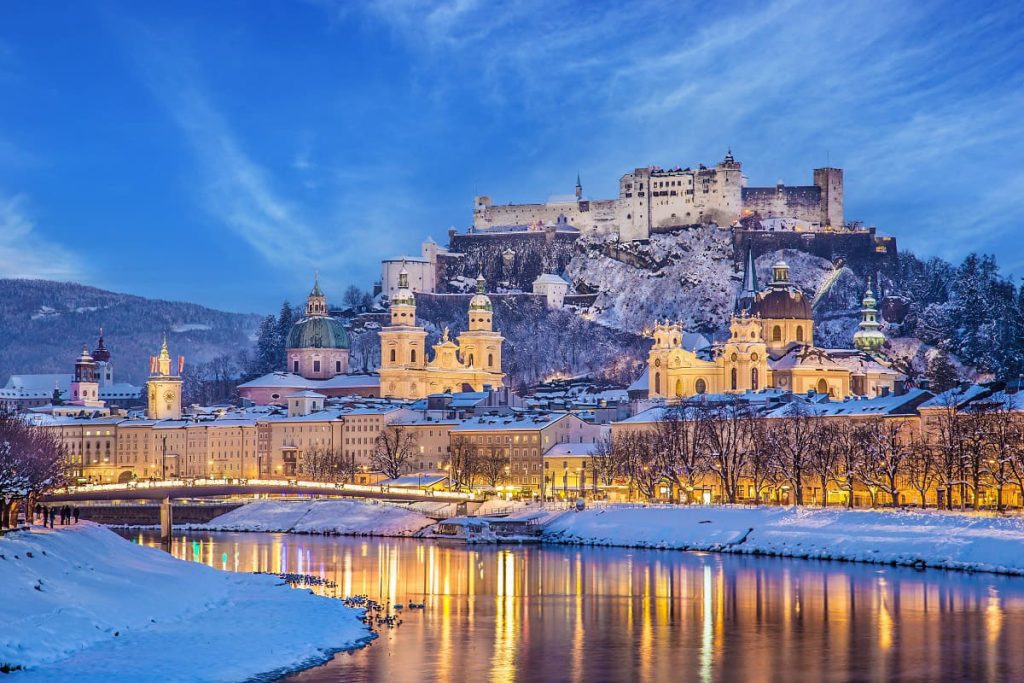
History
Emperors, revolutions, and the enduring spirit of a country define Austria’s fascinating drama in history. Nestled in the heart of Central Europe, Austria’s past is closely linked with the rise and fall of empires, therefore influencing its political path, architectural scene, and culture.
The first threads of this tapestry were spun approximately 400 BC as Celtic people established thriving societies nearby. As witnessed by the remnants of the ancient city of Carnuntum, the Romans’ arrival in the first century BC signaled the start of a time distinguished by the building of infrastructure and the application of urban design. Still, the beginnings of Austria’s history may be exactly traced to the founding of the Ostmark, a boundary area set by the Carolingian Empire in 900 AD.
Rising to prominence in the 13th century, the Habsburg family profoundly changed the course of Austria. The Habsburgs effectively transformed Austria into a strong empire by deliberately planning marriages and obtaining territory. Vienna, ideally at the crossroads of trade routes, developed as the imperial capital, radiating wealth and power.
The Habsburg period is distinguished by both splendor and turbulence. Reaching vast areas of Europe and supporting eminent musicians like Mozart and Haydn, the empire peaked in the 16th and 17th century. But the developing sense of nationalism and religious strife progressively undermined the basis of the empire.
The 19th century brought a tsunami of great change. The political system was greatly changed by the Napoleonic Wars; the Austro-Hungarian Compromise of 1867 acknowledged Hungary’s growing power inside the empire, therefore creating a unique double monarchy.
Significant unrest defined the 20th century. World War I seriously interrupted the Austro-Hungarian Empire, which led to Austria’s smaller-scale republic. Considered the Anschluss, the Nazi takeover happened in 1938 and had a long-lasting effect. Allied forces ruled Austria following World War II until 1955, when it reclaimed its sovereignty and proclaimed ongoing neutrality.
Austria has seen a history marked by extraordinary durability and financial achievement since that time. The nation aggressively participates in the European Union and has positioned itself globally as a major hub for diplomacy, culture, and innovation. Notwithstanding past challenges, Austria has effectively grown to be a country strongly impacted by its historical background, paying homage to its tenacious character.
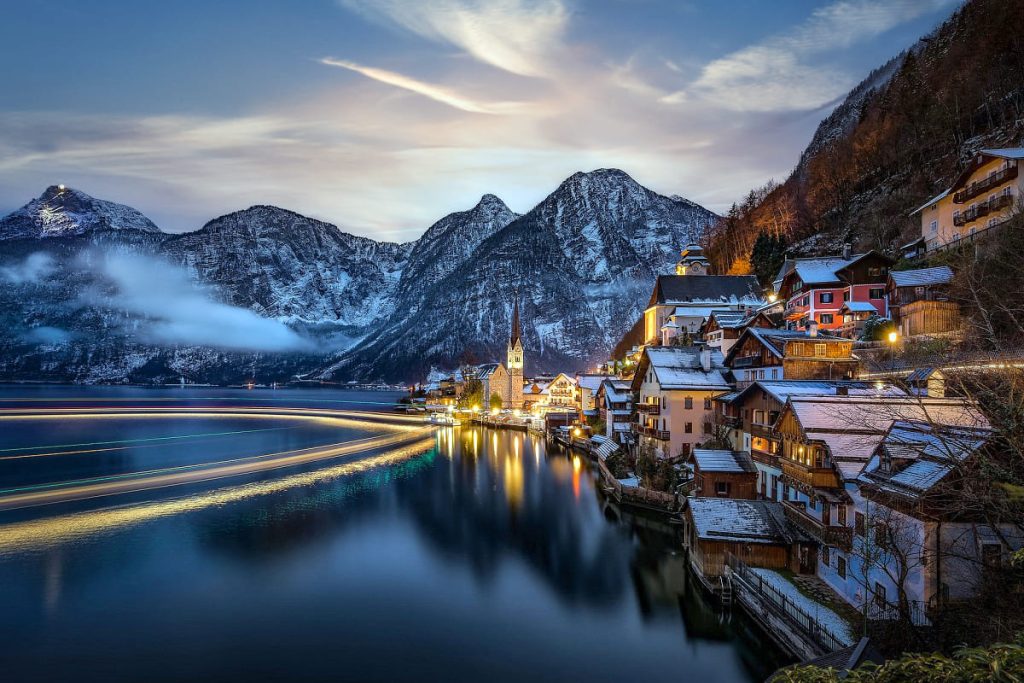
Tourism
Austria invites visitors not just as a destination but also as a totally interesting experience. Situated in the middle of Europe, this picturesque nation unveils a captivating mix of magnificent alpine scenery, enchanted cities steeped in history, and a vibrant culture. From exquisite dances in grand ballrooms to exciting descents on unspoiled slopes, Austria offers a broad spectrum of events.
Vienna is a fantastic beginning point for many trips; it is a city of immense historical relevance and magnificence. Recognized as a UNESCO World Heritage site, Vienna boasts remarkable Baroque architecture, best shown by the magnificent St. Stephen’s Cathedral and the vast Schönbrunn Palace, which act as reminders of its rich past. While the Vienna State Opera and the Vienna Philharmonic Orchestra preserve a legacy of musical genius that echoes throughout generations, internationally praised institutions as the Kunsthistorisches Museum show priceless art treasures.
Austrian travel thrives among breathtaking natural beauty outside of city boundaries. The great mountains of the Alps appeal to those who like the natural world with a certain charm. While motorcyclists overcome difficult mountain routes, enjoying in the excitement of rising uphill, hikers negotiate carefully kept paths and inhale the cool mountain air. The snow-covered slopes change throughout winter to become a perfect refuge for skiers and snowboarders who deftly negotiate the unspoiled, fluffy snow. Ideal for exploration and rejuvenation, Hohe Tauern National Park and Neusiedler See-Seewinkel National Park provide safeguarded areas of unspoiled natural landscapes.
The undeniable appeal of Austrian travel transcends just beautiful mountains and impressive architecture. The birthplace of the great composer Wolfgang Amadeus Mozart, Salzburg enthralls visitors with its charming Altstadt ( Old Town) and the globally recognized Salzburg Festival, which honors artistic expression and music. With its continuing appeal acting as a source of inspiration for photographers, Hallstatt, an enchanted town amid calm lakes and great mountains, offers a glimpse into a former age. Foodies may set out wonderful gastronomic adventures, relishing rich Austrian cuisine with superb pastries and fine wines, so tantalizing their taste receptors with every bite.
The tourist industry in Austria serves a wide spectrum of interests. While history buffs have the chance to investigate the rich legacy of the Habsburgs, winter sports aficionados may find their preferred pursuits on the slopes appealing. While those with a great passion in culture can enter the domain of classical music and art, enthusiasts of the natural world can travel into the vast areas of national parks. Every inch of Austria offers a unique experience, therefore ensuring an interesting and educational trip for every guest.
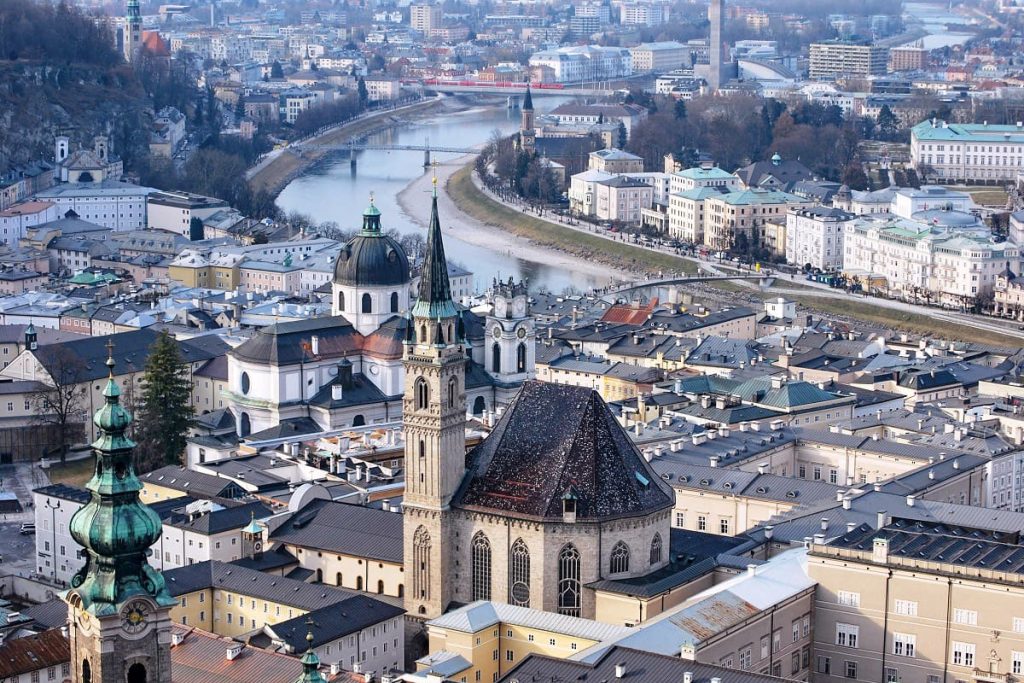
Entry Requirements
Austria welcomes visitors from all across the globe and provides a streamlined immigration process for many countries. Those who are nationals of the European Union (EU), the European Economic Area (EEA), Switzerland, or both are allowed to visit without a visa and stay for a maximum of 90 days during a 180-day period. These visitors just require a current passport with at least three months of remaining validity beyond the planned departure date.
For people from countries outside of these borders, the admittance process becomes more difficult. An Austrian admission would most certainly call for a Schengen visa. Comprising 26 European states, the Schengen Area lets visa holders travel between members for the duration designated without any limitations. Those seeking a Schengen visa usually have to send their applications from the Austrian consulate or embassy situated in their native country.
The documentation required for a Schengen visa application might vary based on the applicant’s country and travel reason. To ensure a flawless application process, it is highly suggested to advance check the local Austrian embassy or consulate.
Regarding admission criteria, Austria applies the reciprocity idea. Visa requirements for foreigners are sometimes opposite to the visa limitations Austria imposes on nationals of that particular nation. For example, Austrian citizens who visit a certain nation will most likely come into similar conditions if Austria requires a visa for nationals of that country.
It should be underlined that the traditional admission criteria are not always followed. People from particular countries might be eligible for visa-exempt access for stays of a designated period. Certain travelers could also need further documentation, including proof of a confirmed departure or sufficient funds.
Travelers should visit the official website of the Austrian Ministry of Foreign Affairs to get the most complete and current knowledge about visa requirements and application procedure.
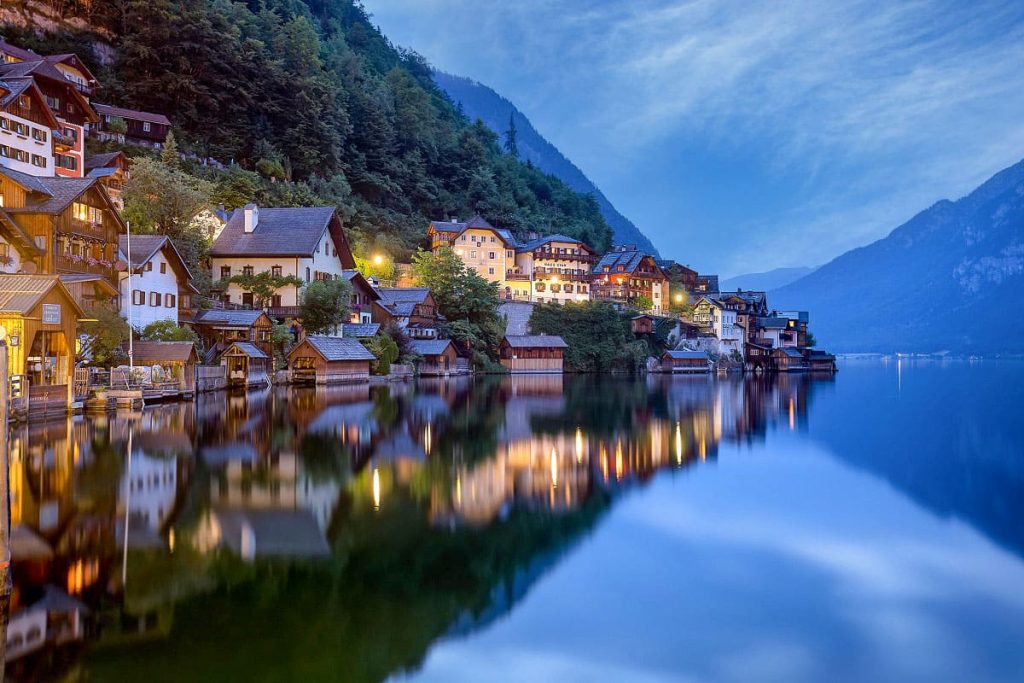
Best Time To Visit
Landlocked in Central Europe, Austria provides a wide spectrum of events all year long. Your particular interests and travel style will determine when would be best to visit Austria. From energetic summer events to snow-covered mountains ideal for winter sports, this fascinating nation has special attractions all year long.
Those seeking outdoor activities and cultural immersion would find perfect conditions in spring (April-May) and fall (September-October). The temperate temperatures are ideal for finding interesting locations like Vienna and Salzburg. Whereas fall shows the surroundings with fiery-colored leaves, spring is distinguished by vivid and varied flowers. The shoulder seasons allow you to escape the heavy summer throng and get a more real and intimate experience of Austria.
For people who enjoy summer sports, the best time to visit Austria is June to August. With their long, brilliant days, the great Alps draw bikers and hikers. The lake are perfect for swimming and boating as they are very clean. The meadows’ rich greener tones create a serene space for relaxation. Rich cultural past of Austria is displayed by colorful celebrations and outdoor events that bring towns to life. Still, during this peak travel time, expect more meetings and most likely more expensive housing.
From December to February, Austria changes remarkably into a paradise for skiers and snowboarders, providing an amazing winter wonderland experience. Snow-covered slopes draw winter sports enthusiasts, while charming towns adorned with brilliant lights foster a festive atmosphere. With their great variety of handcrafted decorations, mouthwatering cuisine, and profound rituals, Austrian Christmas markets provide a real winter experience.
Different regional differences might also influence the ideal duration of travel to Austria. Comparatively to the western part, eastern Austria’s climate is marked by considerably higher temperatures and less precipitation. High-altitude areas get regularly cooler temperatures all year round and more winter snowfall.
The best moment to visit Austria finally depends on personal preferences. Are you longing for cozy evenings in the middle of a snowy paradise or outdoor adventures under the azure sky? Studying seasonal events and weather patterns can help you to personalize your Austrian experience and produce lifelong memories.
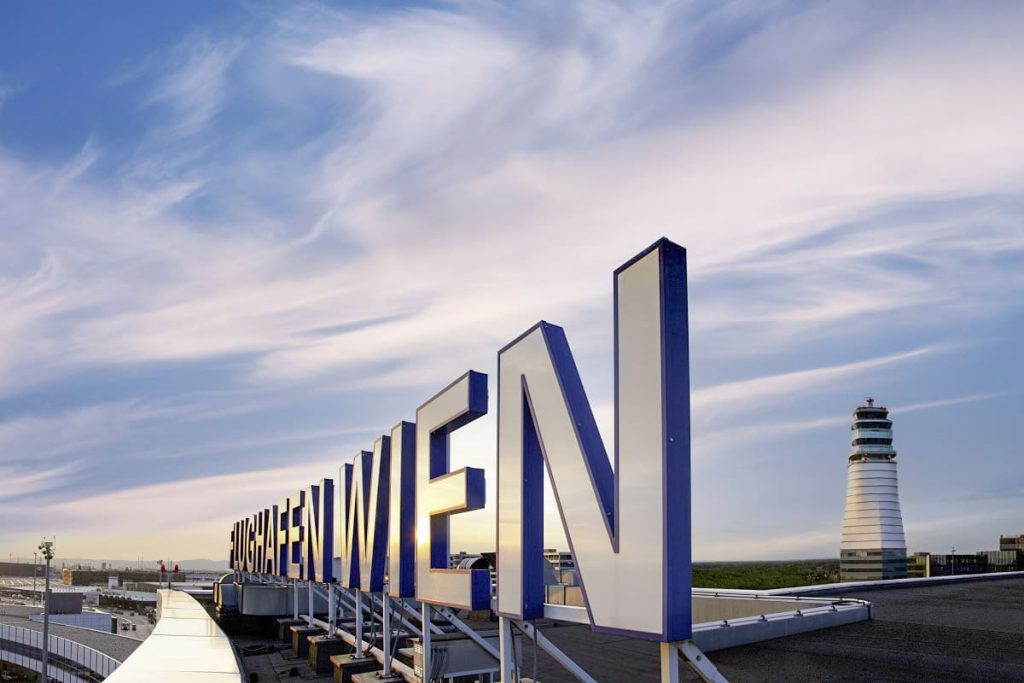
How to Get In
Everyone should give careful consideration to the many options of getting into Austria while making holiday plans. Knowing the procedures of arriving to Austria guarantees a flawless and quick start to your journey.
Plane travel is the most practical and quick way many visitors may reach Austria. Major aviation hub Vienna International Airport (VIE) gets flights from all across the world. Two of the smaller international airports catering regional traffic and offering connections to well-known European locations are Salzburg Airport (SZG) and Innsbruck Airport (INN). Making early flight tickets and researching reduced airfare can help you to optimize your vacation funds.
Other ways of getting to Austria than via plane exist. The very sophisticated rail system of Austria offers a beautiful and comfortable choice. Intercity fast trains, including the Railjet, create direct links between Vienna and other Austrian locations as well as between big European cities. If you desire a more laid-back and leisurely travel, you might choose to investigate taking slower regional trains across picturesque towns and landscapes. For everyone who wants to see several locations in Europe, using European rail passes lets one travel affordably.
Connecting Austria with its neighboring countries, long-distance buses offer a mode of travel for those who are ecologically conscious or seeking an exciting adventure. Leading bus companies usually include lines to far-off towns and villages that are not easily accessed by train, and provide competitively priced, convenient excursions.
Road travel gives people the flexibility and authority to freely see Austria at their own speed. Those who want to drive have to be owners of a current driver’s license, car registration paperwork, and evidence of insurance. Austria collects tolls for its roads using a vignette system, thus it is advisable to acquire one before your trip starts. Winter makes mountain pass travel challenging; thus, it is advisable to check the weather and road closures before you begin your trip.
Whichever way you decide to get to Austria, getting there is an exciting beginning to the adventures waiting for you. Researching schedules, comparing costs, and considering your chosen travel style can help you to ensure a seamless arrival and create the circumstances for a unique Austrian journey.
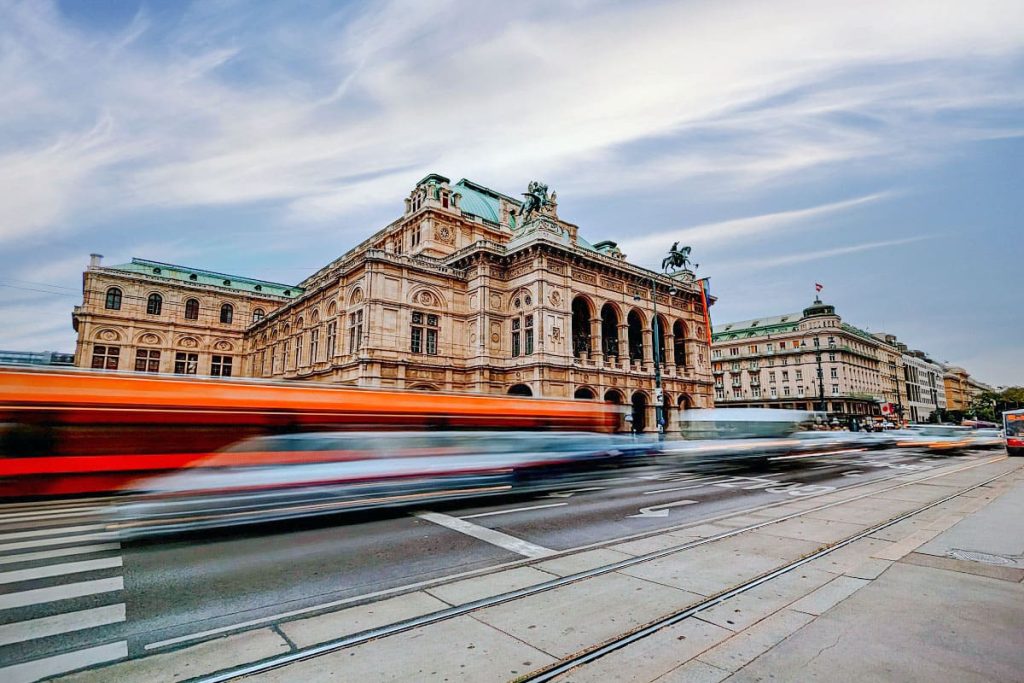
How To Get Around
Familiarizing yourself with Austria’s transportation system will help you to really enjoy all the nation has to offer. The very effective transportation system of Austria guarantees a flawless and comfortable transit between energetic cities, serene towns, and amazing mountain ranges.
Many guests of Austria choose trains as their favorite form of mobility for going about the country. Major cities including Vienna, Salzburg, and Innsbruck are connected by ÖBB, the national railway operator, whose network is somewhat vast. While regional trains make their way across breathtaking valleys, allowing you a view of the Austrian landscape, the High-speed Railjet trains offer rapid connections. The OBB Nightjet service is something you should give thought if you want a luxurious travel experience. Traveling overnight and waking up in your location gives you the ease of completely rested and ready to start your activities.
There are other ways to travel Austria that transcends depending just on the train system. Operating several businesses, including Postbus, public buses offer transit to smaller towns and villages, therefore assuring that even far-off areas are conveniently reachable. Particularly for shorter visits, the public buses offer a reasonably priced substitute and highlight breathtaking vistas along the journey.
Like many big cities, Vienna boasts a quite outstanding and functional public transit system. Tram system and U-Bahn (subway) network of Vienna provide a quick and reasonably priced way throughout the city. Other bigger cities including Salzburg provide similar choices with integrated ticketing systems allowing simple transfers between several forms of public transportation.
Bicycles are a great option if you want an interesting approach to enjoy Austria’s immaculately kept riding routes. Highly sought-after from Passau on the German border to Vienna, the Danube Cycle Path offers amazing riverfront vistas. While those looking for a more laid-back experience will enjoy the gorgeous paths winding through the perfect Austrian countryside, mountain bike aficionados have the chance to face challenging courses in the magnificent Alps. Many cities provide the ease of bicycle rental choices so you may tour at your own speed.
Renting a car gives the best flexibility for people who want the ability to go at their own speed. The highways of Austria are in great state and offer flawless links between main cities and areas. Note that certain freeways have tolls and navigating mountain passes can be difficult, particularly in winter. Beforehand research of local policies is necessary as parking rules differ among towns.
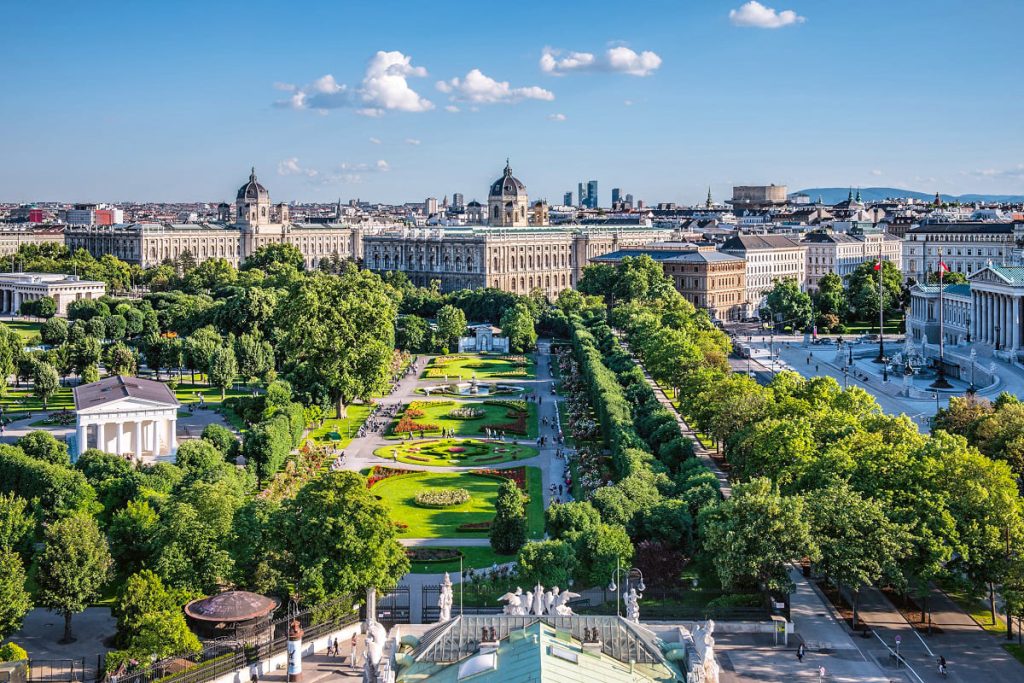
Things To Do
Austria appeals to visitors with a brilliant range of events. Centered in the middle of Central Europe, this nation boasts a rich cultural past, amazing natural beauty, and vibrant metropolitan areas. Whether your trip calls for artistic immersion, outdoor thrill, or a sense of imperial grandeur, Austria offers a wide selection of events to augment it.
One finds plenty of cultural interactions in Vienna, the great city. Wander slowly across the magnificent Schönbrunn Palace, a UNESCO World Heritage Site, and marvel at its rich baroque construction. See the world of classical music by going to a concert hall, either Vienna State Opera or Musikverein. Discovering the Kunsthistorisches Museum, with its amazing collection of masterpieces, art aficionados have the chance Indulge in a slice of great Sachertorte at a vintage café to fully experience the true Viennese culture.
Outside of the city, Austria has a wealth of events to appeal to those who prefer outdoor hobbies. Mountaineers, bicyclists, and hikers all find attraction in the great Alps. Put on your hiking boots and tour well kept paths or challenge challenging mountains to take in breathtaking panoramic views. Slopes covered in snow change remarkably throughout the winter and become a perfect refuge for people with different degrees of ability in skiing and snowboarding. Globally praised ski locations such Kitzbühel and Lech provide thrilling slopes and a lovely après-ski environment.
Activities in Austria transcend simple sight-seeing of great sites and alpine adventures. Mozart’s birthplace, Salzburg, draws visitors with its little Old Town and well-known Salzburg Festival, which honors theater and classical music. Surrounded by calm lakes and magnificent mountains, Hallstatt is a magical town offering a window into a past. Foodies may go on gourmet adventures, relishing strong Austrian cuisine such Wiener Schnitzel and Tafelspitz as well as wonderful desserts and great wines from the Wachau Valley.
Rich in historical backdrop, Austria is Austria. Explore the old center of Habsburg dominance, the historical city of Innsbruck. Discover the field of salt production by setting out a guided trip of the well-known salt mines close to Salzburg. History buffs might investigate the amazing medieval castles dotted around the Austrian landscape, acting as relics from a bygone era.
Austria has a broad spectrum of events fit for any kind of interest. Discover fascinating places with a rich historical past, tackle the magnificent mountains of the Alps, or savor the rich cultural legacy of Vienna. Austria promises an unforgettable experience and assures that every place you visit exposes a new adventure.
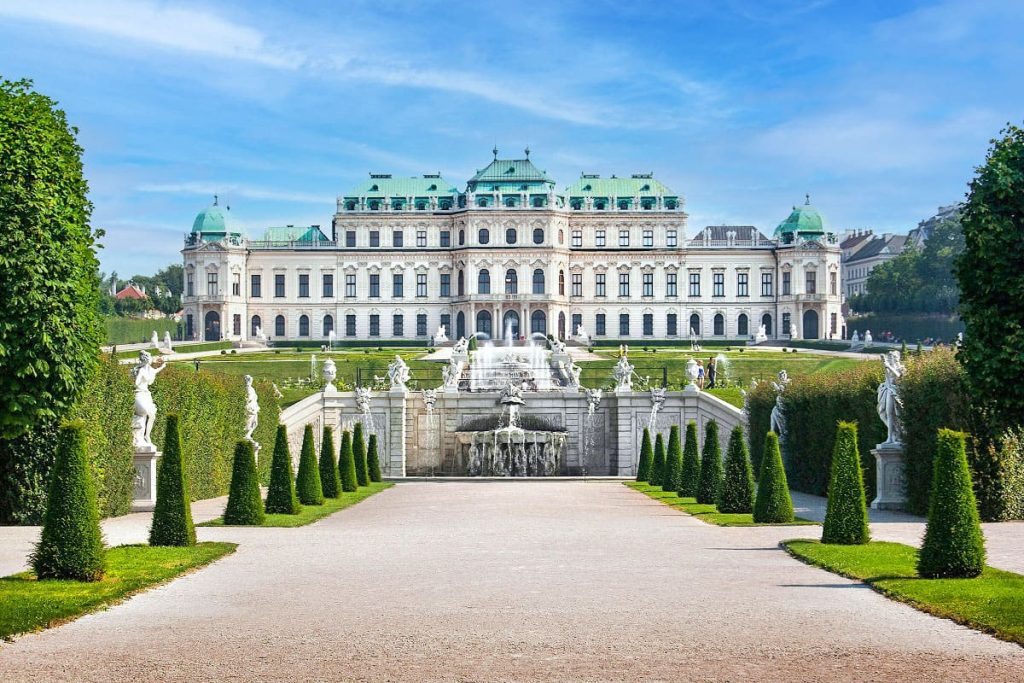
Attractions & Landmarks
The amazing range of places and attractions Austria offers reflects its artistic legacy, spectacular natural beauty, and rich history. These seductive sites provide every visitor a fantastic experience with their breathtaking mountain ranges and regal palaces.
Vienna, the imperial city, is a real gold mine of locations and monuments. One outstanding example of Baroque architectural architecture is the UNESCO World Heritage Site Schönbrunn Palace. Its large grounds, kept properly and ornamented with sculptures, offer a quiet refuge from the busy city. Enter the opulent halls and let the beauty of the Habsburg age transport you. Renowned Renaissance and Baroque painters abound in the Kunsthistorisches Museum collection. When visitors to the Hofburg residence, the former imperial residence, view the opulent suites and staterooms occupied by the Habsburg dynasty over generations, they may be reminded of their own.
Vienna is not the only place with sites and monuments of Austria. Salzburg, Mozart’s birthplace, enthralls with its baroque Altstadt, Old Town. Above the city stands the imposing medieval Hohensalzburg Fortress with its stunning views. The Mirabell Palace is evidence of the architectural beauty of the city with its superb fountains and gardens. History buffs might go to Innsbruck, a place formerly center of Habsburg power. The Golden Roof, a miracle of late Gothic workmanship, graces the former royal house.
Austria’s breathtaking landscape draws those who enjoy the natural world. The Austrian Alps, a UNESCO World Heritage Site, are the dream outdoor adventurer’s destination. While cable cars get visitors to the summit of tall mountains where they are treated to unparalleled vistas, well-kept hiking paths meander past flowing waterfalls and meadows bursting with wildflowers. The Grossglockner High Alpine Road provides some of the most beautiful driving conditions in Europe as one winds across the Alps. Drawing enthusiasts of winter sports to well-known locations like Lech and St. Anton am Arlberg, these amazing mountains become a skier’s dream come true in the winter.
There is a great spectrum of interests for which Austria’s sights and attractions appeal. Discover the rich creative past in concert halls and museums; see the grandeur of royal palaces; or just enjoy the amazing beauty of the Alps. Austria’s remarkable collection of sites ensures that every you turn will expose a new discovery, therefore increasing your awareness of this wonderful nation.
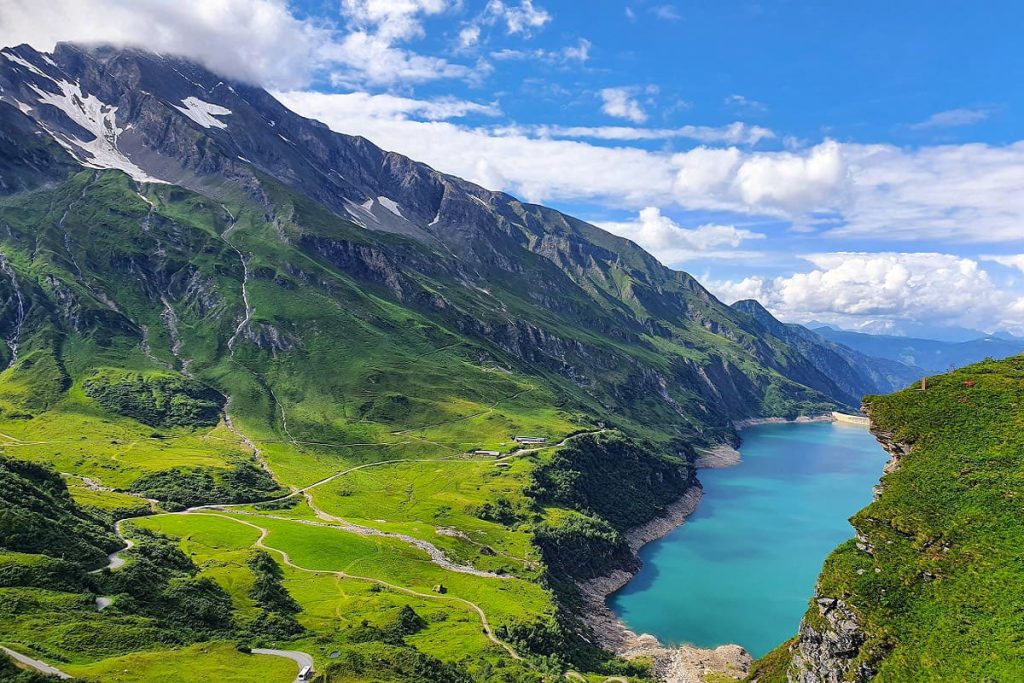
National Parks
Six distinct protected areas spread around Austria’s national park system provide an amazing show of natural variety. Every park has unique character that helps to preserve a wide range of species.
The biggest in Central Europe, the High Tauern National Park really distinguishes itself. Towering mountains that reach 3,000 meters penetrate the heavens and provide a refuge for experienced mountaineers, hikers, and landscape photographers. Glistening glaciers and flowing waterfalls accentuate the park’s great beauty. Look for golden eagles elegantly swooping overhead, marmots basking in sun-drenched rocks, and ibex deftly negotiating the crags.
Shared with Hungary, the cross-border treasure known as the Neusiedler See-Seewinkel National Park provides refuge for migrating species. With the lovely Lake Neusiedl and the nearby Seewinkel marshes, the park presents an amazing mix of freshwater and saltwater settings. The terrain invites visitors to explore with its complex bike and hiking trails. Furthermore, the park features a varied spectrum of birds, which would enthrall passionate ornithologists.
Near Vienna, the Donau-Auen National Park is a vital rest area for migrating birds along the Danube River. A great range of plant and animal species calls the floodplain environment home. Discover the intricate network of paths meandering throughout the floodplain woodland or enjoy the varied environment of the park with a lovely boat trip along the Danube.
The magnificent Northern Limestone Alps shapes the rough majesty of the Kalkalpen National Park. Hikers will be enthralled by paths that weave over magnificent gorges, past gushing waterfalls, and finish in amazing panoramic views. While those who enjoy exploration may sink themselves into the complex cave system of the park, adventure seekers may test their boundaries on the thrilling cliffs.
Thanks to its breathtaking scenery molded by the Enns River, Gesäuse National Park is a lovely place suitable for hikers of any ability. With its amazing canyons, grand waterfalls, and vibrantly floral meadows, the park is indeed a sight to see. For walkers, the paths meander across a range of settings providing a picturesque trip. Exhilarating rock formations to challenge skilled climbers will be found.
The magnificent Thaya River Valley, the crown gem of the Thayatal National Park, stretches on the border between Austria and the Czech Republic. Discover the incredible park with its winding river, big woodlands, striking granite rock formations. While history aficionados may sink themselves into the scattered medieval remains that narrate tales of the past, the park provides a range of routes for outdoor enthusiasts to explore.
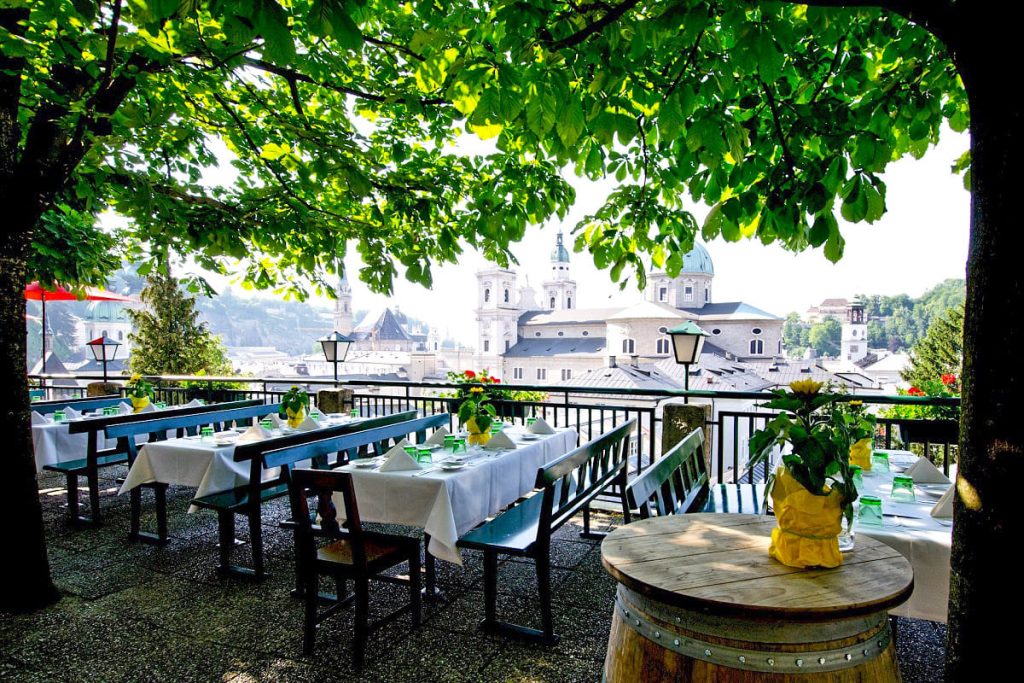
Food & Drinks
The food of Austria is a fascinating mix created from the strands of its rich history and cultural inspirations. Set out a wonderful adventure and savor rich pastries that appeal to the senses as well as consoling soups that offer warmth. With energizing indigenous beverages, each one a unique expression of the location, satisfy your thirst.
Former imperial capital Vienna offers a small slice of Austria’s gastronomy scene. Savish a classic Wiener Schnitzel, a thin veal cutlet covered in a crispy, golden breading. Alternatively, you may enjoy Tafelspitz, a cosy meal of boiled beef topped with vibrant greens, creamy potatoes and strong horseradish sauce. Leberkäse, a strikingly pink meatloaf presented on a crisp bun, is a less formal Viennese delicacy.
Make sure you do not ignore the important Viennese meeting with a traditional Kaffeehaus. Savour a luscious slice of Sachertorte, a chocolate cake stuffed with apricot jam, or a delicate Apfelstrudel, a traditional Austrian apple strudel with a flaky pastry while indulging in the opulent comfort of a soft armchair and a delicious Melange, a coffee enhanced with steamed milk.
Beyond the classic Viennese repertoire, Austrian cuisine consists on a broad spectrum of delicacies. Travel west to savor Käsespätzle, a rather delicious dish made of soft cheese noodles submerged in caramelized onions. Renowned for its Käsknödel, Vorarlberg is a province in western Austria near to Switzerland. Made from a light and airy dough bursting with melting cheese, these delicious dumplings are Those trekking south could discover Kärntner Kasnudeln, a local specialty made of bread pockets stuffed with potatoes, ricotta cheese, and a little bit of energizing mint.
Austria takes great satisfaction in a long-standing legacy of beer brewing spanning many centuries. Savour the deeper tastes of a Märzen, an amber lager with a little sense of sweetness, or experience the energising taste of a Helles, a pale lager noted for its clean and refreshing aftertaste. If you want something non-alcoholic, try Spezi, a popular and interesting mix of orange soda and cola.
The diverse viticultural sites of Austria will enthrall wine enthusiasts. The Wachau Valley is well-known for producing sophisticated Grüner Veltliner wines with lively acidity and subdued mineral overtones west of Vienna. Visit the southernmost point of Burgenland to discover the vineyards noted for their Zweigelt grape varietals and robust Blaufränkisch red wines.
Austrian cuisine is a lively testament to the nation’s legacy and goes beyond simple sustenance. From delicate pastries in Vienna’s coffee shops to strong stews in the alpine regions, Austria’s gastronomic scene presents a wide spectrum of cuisine. The wines are full-bodied and the indigenous beverages are refreshing, thereby guaranteeing a unique experience for any pallet.
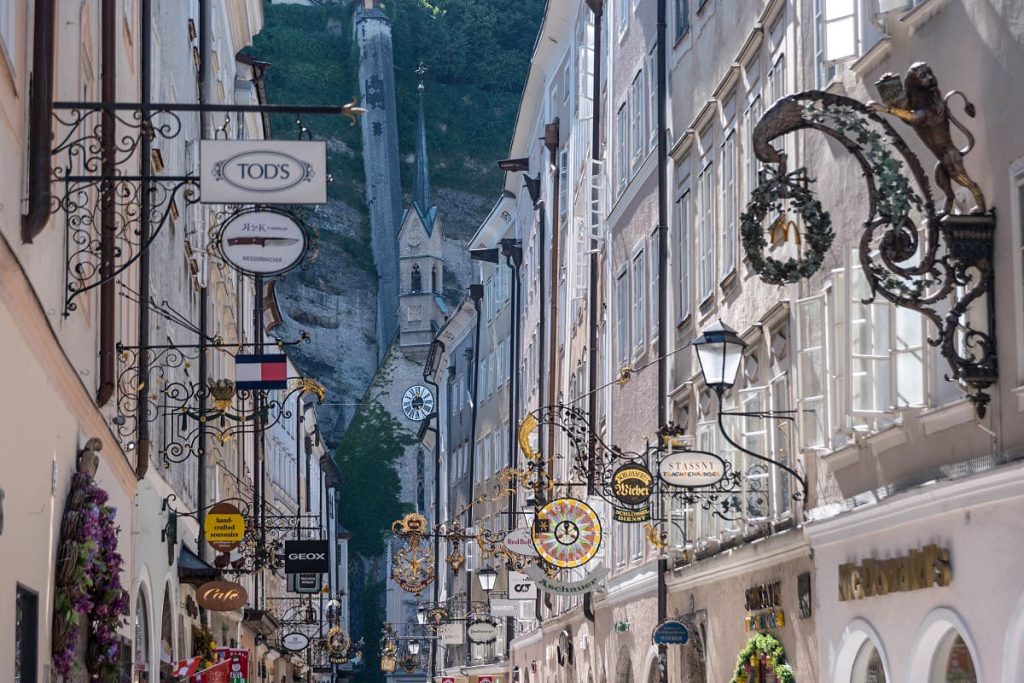
Shopping
Austria presents a convincing shopping experience combining a wide range of local treasures, well-known international brands, and painstakingly produced goods. Bright metropolitan settings decorated with retail stores offer a dramatic contrast with wonderful Christmas markets overflowing with unique goods. Austria meets the needs of casual browsing as well as experienced shoppers.
The most famous city in the nation, Vienna, is unparalleled as a refuge for consumers. Kärntner Straße is a car-free haven where several international fashion labels coexist with reputable Austrian retailers. While Mariahilfer Straße serves customers on a budget, discriminating connoisseurs would savor the elegant road of Kohlmarkt. Any trip to Vienna should include a visit to the ancient department stores. One such shop is the opulent Steffl, a neighbourhood institution bursting with priceless retail goods.
The shopping scene of Austria fascinates outside of the well-known Vienna areas. Salzburg’s Getreidegasse is a lovely pedestrian strip with stores and cafés that attracts visitors with striking displays. Conversely, Innsbruck’s Maria-Theresien-Straße presents a vivid mix of regional businesses and foreign names. Well-known cities all throughout the country include large shopping complexes that may house a variety of retail stores inside one construction.
Discover the vibrant market scene of Austria to really engage yourself in the real Austrian culture. Foodies could lose themselves at farmers’ markets bursting with freshly picked vegetables, a fascinating range of cheeses made locally, and unique regional cuisine. Christmas markets help Austrian towns to become magical winter wonderlands all over the festive season. With glittering lights, energetic music, and a range of unique handcrafted decorations, gifts, and mouthwatering local cuisine, this outdoor paradise provide a mesmerizing atmosphere.
Shopping in Austria is a rich cultural experience rather than just a means of acquisition of things. Visit specialized businesses offering skillfully crafted traditional Loden clothes from boiled wool. Discover boutiques bursting with wonderfully made dirndls featuring rich hand-embroidery, thereby reflecting Austria’s ongoing cultural legacy. While specialist stores all throughout the nation provide Swarovski crystals, a global emblem of Austrian perfection, indigenous jewelry offers a unique beauty. Art lovers may find and value the work of local artists and artisans by visiting galleries displaying their efforts.
Most of the businesses in Austria follow weekday opening hours from 10:00 am to 7:00 pm if one wants to enjoy a perfect shopping experience. On Thursdays, certain stores could, nevertheless, open till 8:00 p.m. Usually, the running hours throughout the weekend are cut back, and many stores close on Sundays. Armed with this knowledge, you may boldly tour Austria’s retail landscape and find a wealth of retail jewels.
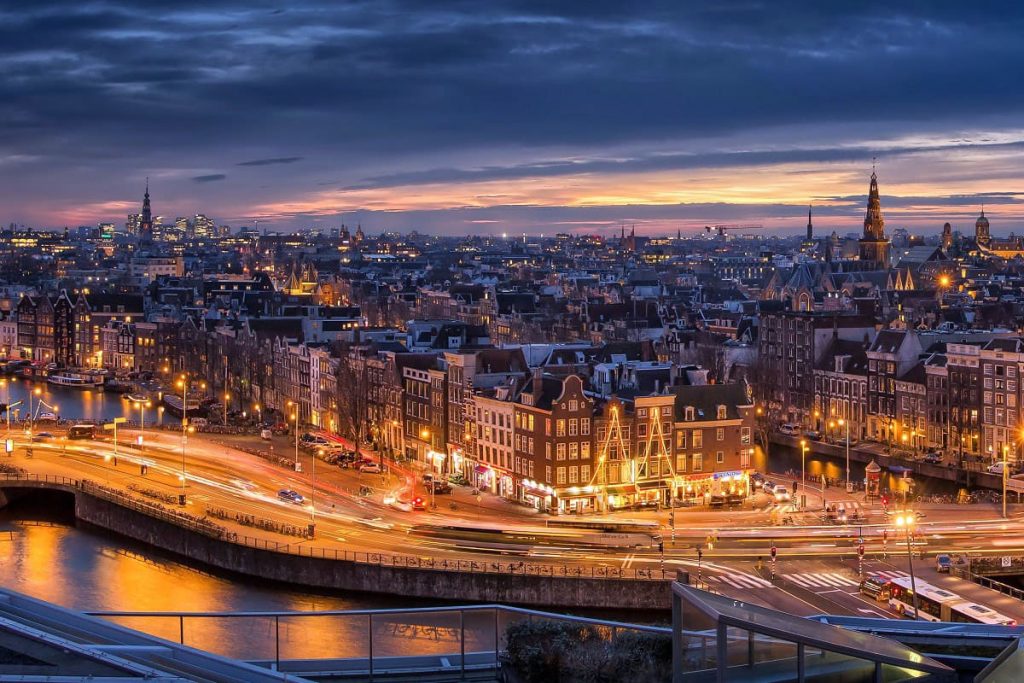
Nightlife
Austria’s active night scene offers a broad spectrum of activities to suit any taste. Underground speakeasies, explosive dance clubs, friendly bars, and outdoor events, evenings in Austria radiate an irresistible appeal.
The main center of the nation, Vienna, has a sophisticated and polished nightlife. See a hidden basement pub for finely crafted beverages, or hang out with high class people in a rooftop bar with amazing views. See a traditional Heuriger, a wine bar where local wines are presented liberally together with great cuisine and music, thereby completely immersing oneself in the genuine Viennese culture.
The nightlife in Austria transcends Vienna’s offers. Salzburg’s Linzer Gasse district transforms midnight into a vibrant gathering of bars, clubs, and student hang-out venue. Innsbruck’s university zone is vibrant and energetic, and its pubs are meant especially to appeal to a younger audience. The main cities of Austria provide a well selected range of nightclubs featuring eminent global DJs performing energetic dance music that will thrill your senses.
Attending a classical music performance is advised if one wants to completely enjoy and interact with a unique cultural surroundings. There is much musical legacy from Austria that permeates the entire nation. The majestic Musikverein concert hall and the globally praised Vienna State Opera call Vienna, the clear hub of music home. Mozart’s hometown, Salzburg, has year-round classical music events and celebrations that provide a chance to really experience the ongoing impact of this artistic master.
The Austrian nightlife spreads outside from indoor venues and brings vivid colors to the surroundings throughout the summer. Sometimes held on the hallowed grounds of castles or in beautiful courtyards, outdoor concerts are a great chance to enjoy a nice evening. Perfect environment for a peaceful evening under a starry sky is created by roof bars with breathtaking views of the city and open-air bars along the Danube River.
The nightlife in Austria allows a great spectrum of tastes. Austria offers a wide selection of evening events to suit anyone looking for sophisticated cocktail experiences, energetic dance clubs, or the cosy setting of a classic pub. Research the facilities at your chosen location thoroughly; dress in a way that makes a strong impression at upscale restaurants; and be ready to totally enjoy the vibrant and interesting environment that defines Austrian nights.
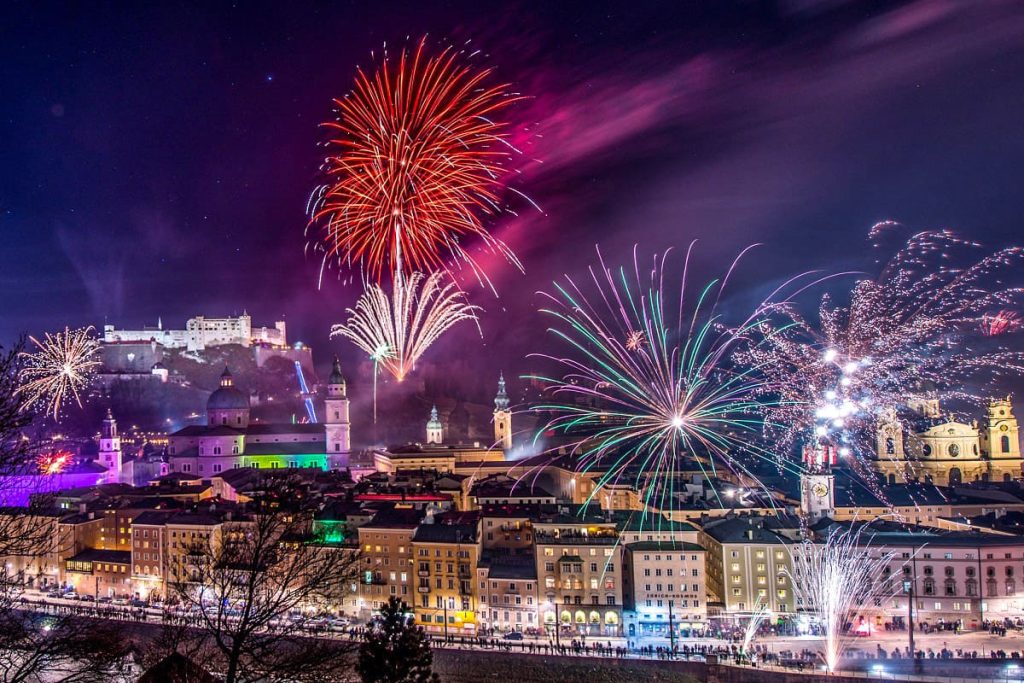
Festivals & Events
Austria has a vivid range of celebrations and events all year long. Austria offers a vast array of activities to improve your travels, including vibrant folk celebrations loaded with song, dancing, and celebration and classical music concerts in magnificent concert venues.
Vienna, the great city, humbs with the energy of holidays and events. An annual event spanning the summer, the Salzburg Festival transforms the city into a center for classical music aficionators. On the stages, internationally known opera singers, directors, and orchestras produce amazing and unforgettable musical experiences. Enchanting guests all during the winter, the Vienna Christmas Markets are a hypnotic exhibition of glittering lights, festive decorations, and traditional handcrafted goods.
Festivities and events held in Austria go beyond Vienna. With the yearly Mozartwoche event in January, Salzburg, where Mozart was born, honors its rich musical tradition. Between majestic mountains, Innsbruck springs alive during the Klassik am Berg (Classics on the Mountain) festival, presenting outdoor events in breathtaking settings. On the banks of Lake Constance, the picturesque town of Bregenz celebrates its renowned Bregenz Festival, which comprises opera performances on a specially floating stage.
Foodies might enjoy the gourmet treasures presented during Austria’s celebrations and festivities. Every year in the spring, the Vienna Food Festival offers a great range of Austrian and international cuisine. Wine enthusiasts may go to events in Austria’s renowned wine regions, like the Wachau Valley and Burgenland.
The many cultural legacy of Austria is also honored in its celebrations and festivities. Before the Lent season, the Fasching (Carnival) celebrations bring vivid processions, elaborate clothing, and enthusiastic celebration onto the streets. Celebrated annually in September, the Almabtrieb honors the homecoming of the cows from the mountain pastures. It covers traditional folk music, dance, and the chance to savor regional cuisine.
Celebrating holidays and events in Austria offers a unique opportunity to really interact with the vibrant culture of the country. Researching forthcoming events will help you to experience the dynamic energy and rich traditions observed all year long when you plan your trip.
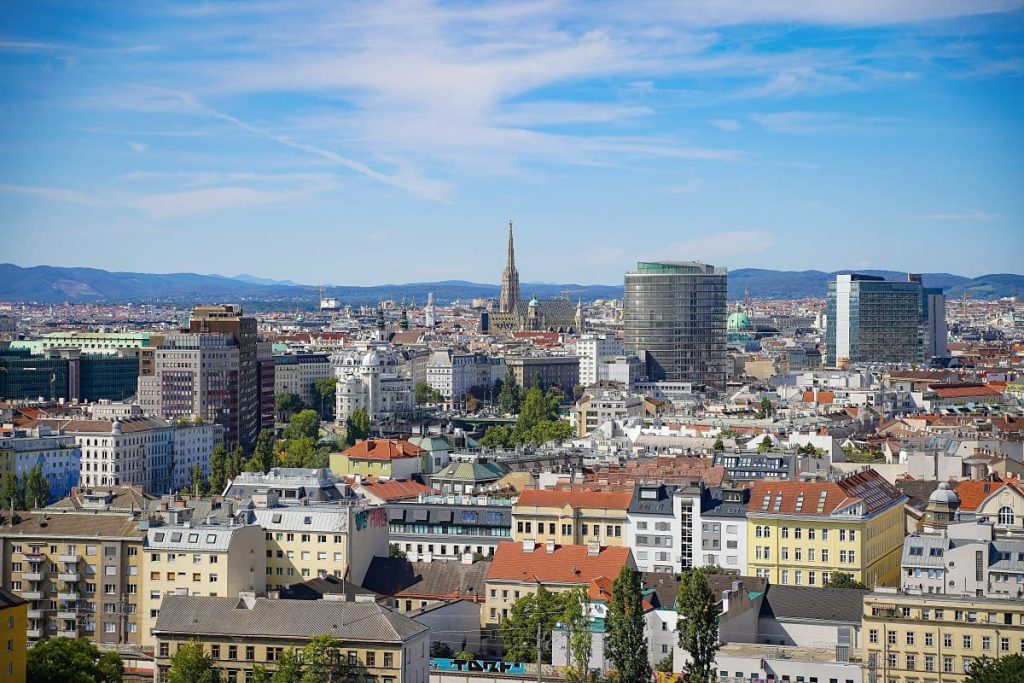
Stay Safe And Healthy
Renowned for its breathtaking landscapes, Austria has developed a strong reputation for low crime rates and rigorous safety policies. Even in these picture-perfect settings, though, a small bit of knowledge goes a lot toward ensuring a visitor’s vacation is enjoyable.
For quick help during an emergency, Austria employs the pan-European emergency number 112. To contact other emergency services, dial 121 for police; call 141 for an ambulance; call 144 for mountain rescue; call 133 for Fire. Furthermore readily available are specialist services as the Missing Children Hotline (116000) and breakdown assistance (ÖAMTC: 120, ARBÖ: 123).
Although Austria has a low general crime rate, many situations demand care. Markets, public transportation, and tourist sites are crowded areas where scams and pickpocketing especially might cause little theft. Being aware of your surroundings, safeguarding your belongings, and avoiding carrying big sums of cash or expensive goods may help you to lower these risks. Back off gently and report someone you believe to be trying to pickpocket you to the police or security officials.
Rural locations can have less frequency of theft. Still, big cities like Vienna, Salzburg, and Innsbruck are more worried about bike theft. Lock the wheels and frame with a robust lock to guard your bicycle; stay away from leaving it alone in dark or far-off areas. Register your bicycle either with a bike shop or with the local police to deter theft even more. Also, you should immediately report such instances to the police.
There are concomitant issues even if Austria’s mountainous geography provides amazing vistas. Always check the weather before you head toward the mountains; dress appropriately; make sure you have enough food, drink, and first aid supplies on hand. Maintaining your safety calls on you to follow approved paths. Call mountain rescue at 140 immediately should you become injured or lost.
Experience is more rich when one travels with cultural awareness. Generally speaking, Austrians are respectful and polite. Courtesy shows via shaking hands, saying thanks, and greeting people. When visiting sites of worship like cemeteries, monasteries, and cathedrals, dress modestly fitting for the austere environment of the site.
Vienna boasts a large system of bike lanes spread around. On these approved paths as on roadways, one should use the same care. Cross a bike lane either using the designated pedestrian crossings or waiting for areas to open. Don’t cross them recklessly. Giving way to bikes helps to ensure the safety of both motorcyclists and walkers.


